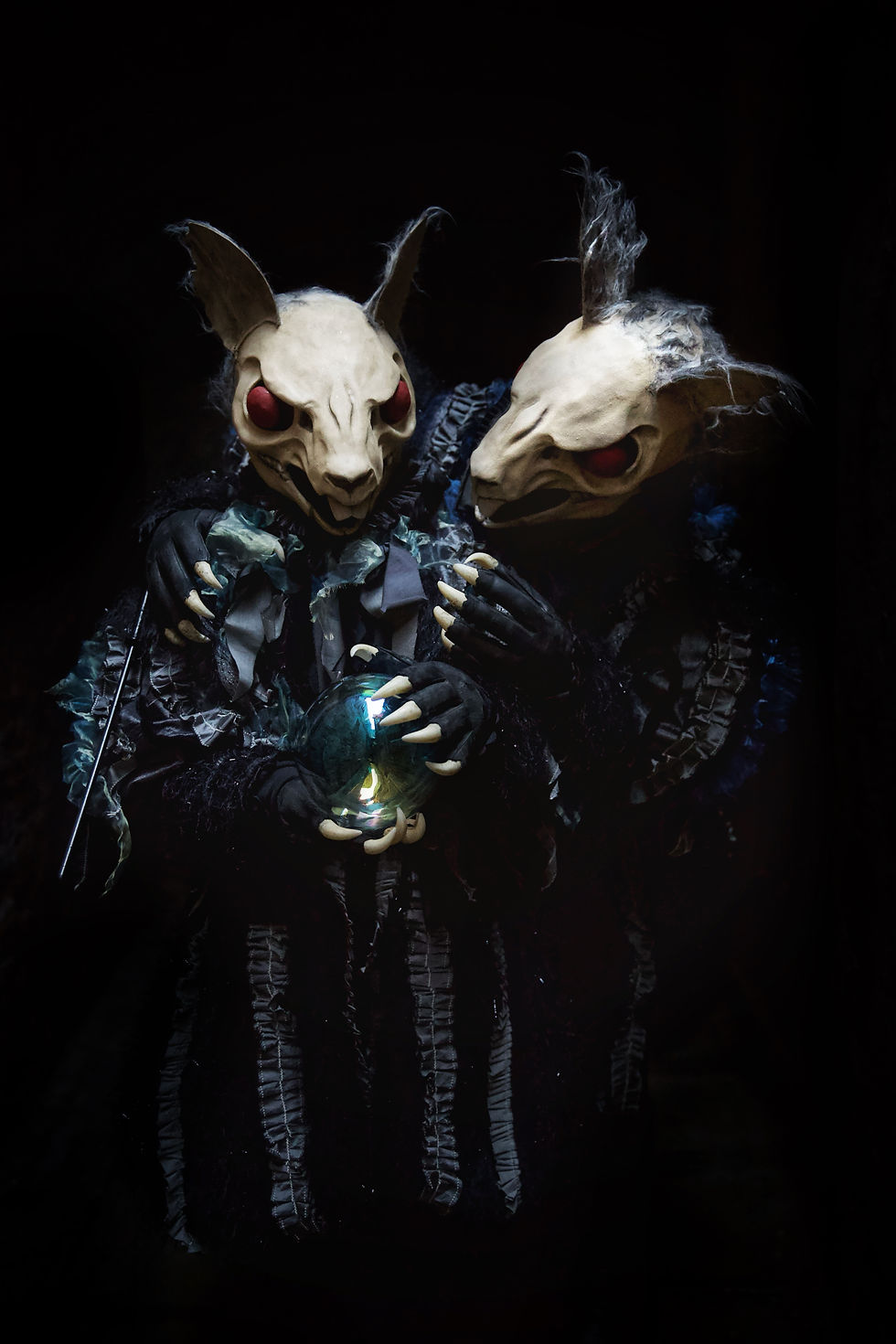Wererats 鼠人
- Robin Yong

- Jun 6, 2024
- 4 min read

Wererats are a cunning and avaricious breed of lycanthrope, their sly personalities and wiry, twitchy humanoid forms making them formidable adversaries. With thin, unruly hair and darting, beady eyes, wererats possess an unsettling, rodent-like appearance even in their human guise. Their preferred fighting style reflects their predatory nature, as they favor the use of light, easily-concealed weapons and ambush tactics over direct confrontation. While a wererat's rat form is capable of delivering a nasty, infectious bite, they typically reserve that bestial shape for the purposes of stealthy infiltration and swift escape, rather than open combat.

Wererats operate in close-knit clans much like a thieves' guild, carefully selecting and inducting new members by willfully transmitting their lycanthropic curse. Those who are accidentally afflicted or who attempt to break free of the clan's control are ruthlessly hunted down and eliminated, the wererats viewing such rogue elements as a threat to the secrecy and stability of their underground networks. These cunning creatures can be found dwelling in the shadowy cellars, catacombs and sewers of urban civilizations, viewing the subterranean realms as their rightful hunting grounds. Ordinary rats and their giant cousins are often found living symbiotically alongside the wererats, the lycanthropes using the rodents as both companions and camouflage in their dark, twisting lairs.


A little photo series on a slightly darker side of the Venice Carnevale...our little fascination of rats and the plague...of dungeons and magic...and of course, lycantrophy....a fascinating concept in European folklore...
Lycanthropy, one of the most ancient and dreaded curses known to exist, has the power to transform even the most civilized humanoid into a savage, bloodthirsty beast. In their natural humanoid state, those afflicted with this dark affliction appear no different from any other member of their race. However, over time, many lycanthropes begin to develop subtle physical traits that betray their monstrous nature. A sharpening of the features, a heightened predatory awareness in the eyes, or even the occasional glimpse of an unnaturally elongated nail or fang may all be signs that the curse is taking hold. But it is in their bestial form that the true horror of lycanthropy is revealed. Under the influence of the curse, the lycanthrope's body undergoes a grotesque metamorphosis, reshaping itself into a powerful, animalistic predator - a fearsome hybrid of man and beast. Though they may resemble a normal animal of their kind, a closer look will reveal a spark of unnatural intelligence in their eyes, and those eyes may even glow with an eerie, crimson light in the darkness.

Some lycanthropes, overcome by the savage impulses of the curse, embrace the monster within and use their newfound power to spread terror and bloodshed, often emerging from the shadows under the light of a full moon to wreak havoc. These evil lycanthropes skillfully conceal their affliction, blending seamlessly into normal society before unleashing their bestial fury. In contrast, those lycanthropes who fight against the curse often become reclusive, uncomfortable in the company of other civilized beings. They retreat deep into the wilderness, far from villages and towns, in a desperate attempt to isolate themselves and protect the innocent from the monster that lurks within.

The curse of lycanthropy is a harrowing affliction that transforms an otherwise normal humanoid creature into a bestial, supernatural being. This twisted transformation can occur in a few ways - either by sustaining a wound from a lycanthrope, or if one or both of the individual's parents are themselves lycanthropes. The curse runs deep in the victim's veins, manifesting most powerfully during the full moon when the humanoid form is violently overtaken by the beast within. Yet, a skilled spellcaster wielding the power of a remove curse spell may be able to free the afflicted from this monstrous condition. However, for those born as natural lycanthropes, the curse is far more ingrained and can only be lifted through the immense magical power of a wish.
How the cursed individual chooses to confront their lycanthropy makes all the difference. Some fight valiantly against the bestial urges, clinging to their normal alignment and personality even as the full moon forces them to transform. These tormented souls must wrestle with the feral, predatory instincts raging inside, often unable to recall the violent acts committed in their beastly state. The memories haunt them like bloody dreams, a constant reminder of the monstrous power lurking beneath the surface. Yet, through sheer force of will, they strive to maintain control and live as they always have.

In contrast, other lycanthropes simply surrender to the curse, embracing the primal power of their shapechanging abilities. With practice, they learn to assume their beast or hybrid forms at will, no longer beholden to the whims of the moon's cycle. Tragically, most who walk this path fall prey to bloodlust, becoming evil, opportunistic creatures that ruthlessly prey upon the weak. They have given in completely to the savage, predatory nature of the lycanthropic curse.

Lycanthrophy is often associated with werewolves, although other forms of animals have been mentioned. The werewolf is a widespread concept in European folklore, existing in many variants, which are related by a common development of a Christian interpretation of underlying European folklore developed during the medieval period.
However, in Venice, the wererats are probably more fitting.

This is just another mini photo series done on a walk around town on a rainy morning at the Venice Carnevale with my friends Moreta and Antonio. The wonderful costumes are made by another good friend Daniel Balleti....so here we go, a slightly different set of Venice Carnevale costumes and masks...






Comments